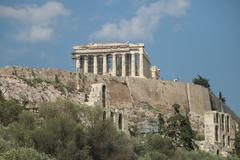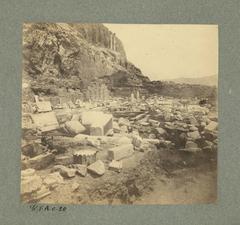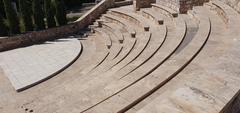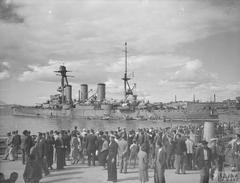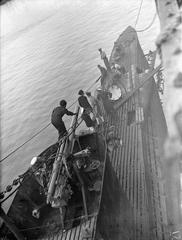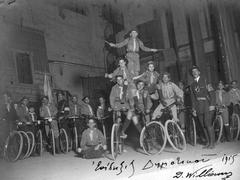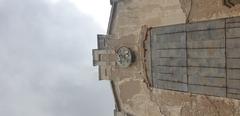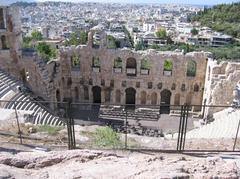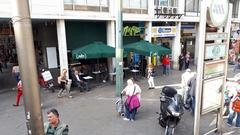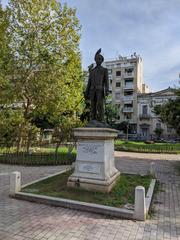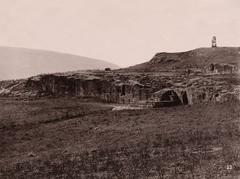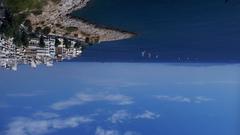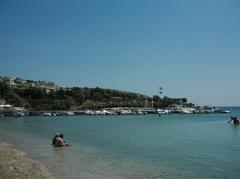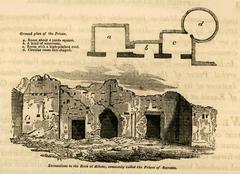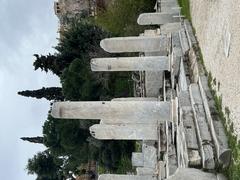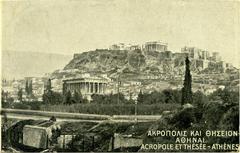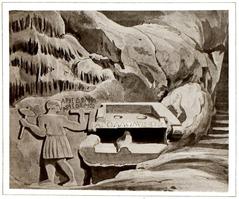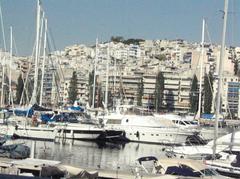
Hellenic Maritime Museum: Comprehensive Guide to Visiting Hours, Tickets, and Piraeus Historical Sites
Date: 04/07/2025
Introduction
The Hellenic Maritime Museum in Piraeus stands as Greece’s foremost institution dedicated to the preservation and celebration of the nation’s significant maritime legacy. Founded in 1949, the museum offers a captivating journey through thousands of years of Greek seafaring, from ancient triremes and legendary naval battles to modern naval achievements and technological advancements. Nestled beside the historic Zea Marina and the ancient harbor, the museum uniquely incorporates sections of Conon’s Walls from the 4th century BCE, linking the physical experience of visitors with the depth of Greece’s nautical past. Its extensive collection, interactive exhibits, and educational programs make it a top destination for history lovers, families, and cultural travelers exploring Piraeus historical sites (athens24.com, Hellenic Maritime Museum Official Website, Athens Tourist Information).
This guide provides detailed information on the museum’s history, exhibitions, practical visitor tips, accessibility, and nearby attractions—helping you plan a smooth and enriching visit.
Table of Contents
- Historical and Cultural Significance
- Exhibits and Collections
- Visitor Information
- Special Events, Guided Tours, and Photography
- Practical Tips and Accessibility
- Nearby Attractions and Travel Tips
- Frequently Asked Questions (FAQ)
- Conclusion and Recommendations
- References
Historical and Cultural Significance
Founding and Architecture
The Hellenic Maritime Museum was established in 1949 following dedicated efforts by naval officers, historians, and enthusiasts to safeguard Greece’s seafaring tradition. Initially located in a modest two-story building, the museum relocated in 1964 to its current site, thanks to the support of the Piraeus Port Authority and the National Tourist Organization. The entrance, built into the ancient Conon’s Walls, serves as a symbolic and physical link to Greece’s maritime defense history (athens24.com).
The modern complex features a 1,900-square-meter main exhibition hall and an outdoor peristyle aisle, blending indoor and outdoor displays for an immersive visitor experience. Over the decades, the collections have expanded dramatically, with support from government ministries and private donors.
Maritime Heritage and Community Engagement
The museum’s mission extends beyond artifact preservation—it actively promotes maritime education through workshops, guided tours, and interactive programs for all ages. As Greece’s representative at international exhibitions, it also plays a vital role in cultural diplomacy and the global narrative of naval history.
Exhibits and Collections
Chronological and Thematic Galleries
The museum’s ten galleries are organized chronologically and thematically, tracing the evolution of Greek maritime activity:
- Prehistoric & Ancient Periods: Detailed models of ancient ships such as triremes, early navigational instruments, and rare charts illustrate the roots of Greek seafaring (33travels.com).
- Byzantine & Modern Eras: Displays of naval weapons, uniforms, and paintings depict the continuity and adaptation of maritime traditions.
- 19th & 20th Centuries: Model warships, merchant vessels, and photographic archives explore pivotal naval events, including the Battle of Navarino and the transition to steam navigation (maritimehellas.org).
Maritime Picture Gallery
A dedicated room showcases seascapes by renowned Greek artists like Prossalentis, Volanakis, and Chatzis, underscoring the profound influence of the sea on Greek art and identity (piraeus.org).
Outdoor Exhibits
Notable outdoor installations include the conning tower of WWII submarine “Papanikolis,” original anchors and cannons from the Battle of Navarino, and maritime sculptures—offering unique photographic opportunities (en.wikipedia.org).
Naval Library and Special Collections
The museum’s naval library is among the most important in Greece, with over 17,000 volumes, 2,500 rare maps, and extensive historical archives. It serves as a valuable resource for researchers and maritime professionals (maritimehellas.org).
Temporary exhibitions and special events regularly complement the permanent displays. Check the official museum website for current programs and updates.
Visitor Information
Location and Getting There
- Address: Akti Themistokleous 12, Marina Zeas, 185 37 Piraeus
- By Metro: Lines 1 or 3 to Piraeus Station, then bus 904 or 300
- Walking: 20 minutes from Piraeus Port through Zea Marina (Hellenic Maritime Museum - How to Come)
- Parking: Limited nearby; public transport recommended
Visiting Hours & Tickets
- Tuesday to Saturday: 09:00 – 14:00
- Sundays, Mondays, Public Holidays: Closed
- General Admission: €5
- Reduced Admission: €3 (students, seniors, families with 3+ children, over 65)
- Free Admission: Children under 6, people with disabilities, museum members, guides, Navy and Coast Guard officers
- Tickets: Purchase at entrance; check official website for updates
Contact: +30 210-4516264, +30 210-4286959
Accessibility
The museum is fully accessible, with ramps, elevators, and adapted restrooms. Contact staff in advance for special assistance (Kedros Travel).
Special Events, Guided Tours, and Photography
- Guided Tours: Available for groups—book in advance for English or Greek language tours.
- Educational Programs: Interactive workshops and activities for children and students.
- Special Exhibitions: Past events have included art retrospectives and historical displays. Check the activities page for current events.
- Photography: Permitted for personal use (no flash/tripods). Confirm restrictions for temporary exhibitions.
Practical Tips and Accessibility
- Arrive Early: To make the most of limited opening hours.
- Bring Valid ID: For reduced or free ticket eligibility.
- Dress Comfortably: Wear suitable footwear for exploring multiple rooms and the marina area.
- Stay Hydrated: Bring a refillable water bottle, especially in summer (Kedros Travel).
- Family Friendly: Children under 6 enter free; interactive exhibits cater to families.
- Visitor Conduct: Maintain a quiet, respectful atmosphere; supervise children closely.
Nearby Attractions and Travel Tips
- Archaeological Museum of Piraeus: A short walk away, complements your maritime exploration.
- Marina Zeas: Ideal for strolls, dining, and scenic views.
- Port of Piraeus: The bustling gateway to the Greek islands.
- Restaurants: Enjoy fresh seafood and traditional Greek cuisine at local tavernas.
If traveling onward by ferry, coordinate your visit with ferry departure times.
Frequently Asked Questions (FAQ)
Q: What are the museum’s opening hours?
A: Tuesday to Saturday, 09:00–14:00. Closed Sundays, Mondays, and public holidays.
Q: How much do tickets cost?
A: General admission is €5; reduced is €3. Children under 6 and select groups enter free.
Q: Can I buy tickets online?
A: Currently, tickets are purchased at the entrance. Check the official website for updates.
Q: Is the museum accessible for wheelchair users?
A: Yes, fully accessible.
Q: Are guided tours available in English?
A: Yes, with advance booking.
Q: Is photography allowed?
A: Non-flash photography is generally permitted for personal use.
Q: What other attractions are nearby?
A: The Archaeological Museum of Piraeus, Marina Zeas, and the port area.
Conclusion and Recommendations
The Hellenic Maritime Museum is a vital cultural landmark for anyone seeking to understand Greece’s deep maritime roots. Its extensive collections, engaging exhibitions, and educational initiatives provide a vibrant and accessible window into Greek seafaring history. With convenient visitor amenities, accessibility, and proximity to other Piraeus historical sites, the museum is ideal for individuals, families, and groups.
For an enhanced visit, check for special exhibitions, plan around opening hours, and consider exploring the beautiful Zea Marina and local eateries nearby. Stay up to date via the official museum website, and for audio tours, download the Audiala app. Immerse yourself in the maritime story that helped shape Greece and the world.
References
- athens24.com
- Hellenic Maritime Museum Official Website
- Athens Tourist Information
- 33travels.com
- Kedros Travel
- maritimehellas.org
- piraeus.org
- en.wikipedia.org
- This is Athens
- Greek Boston





